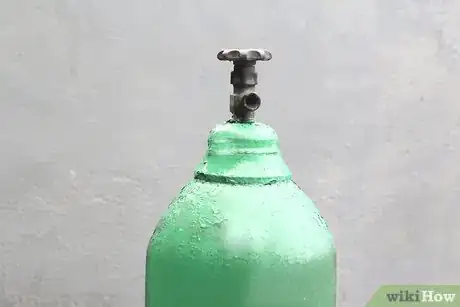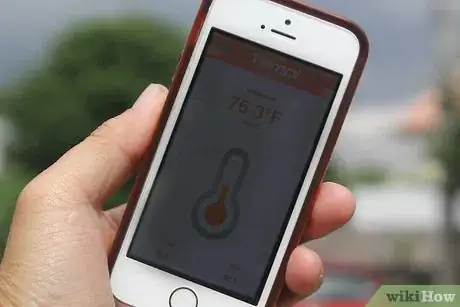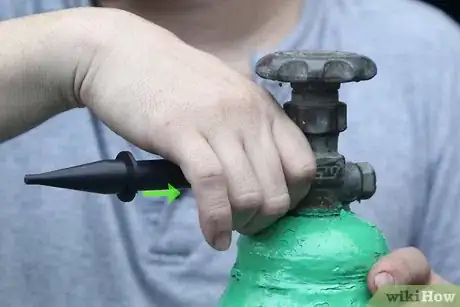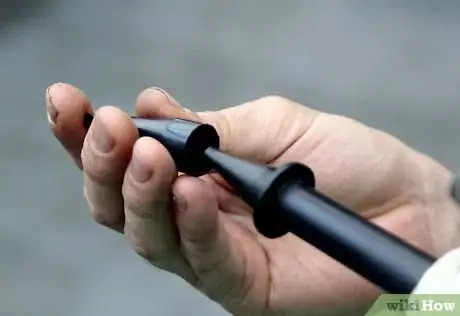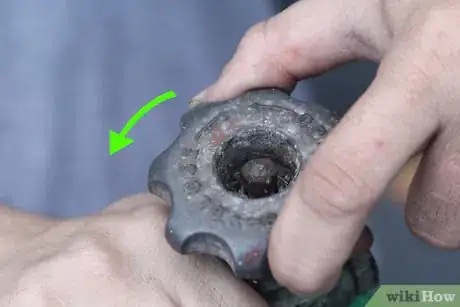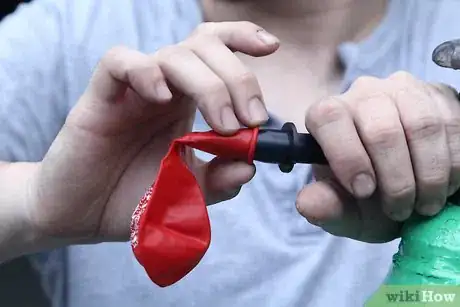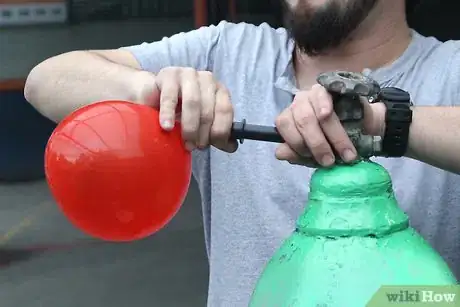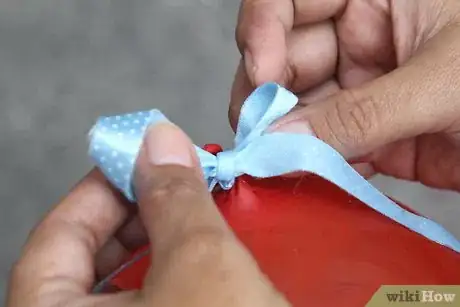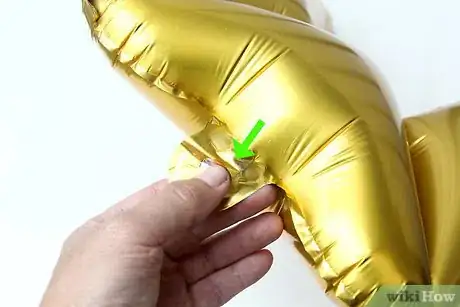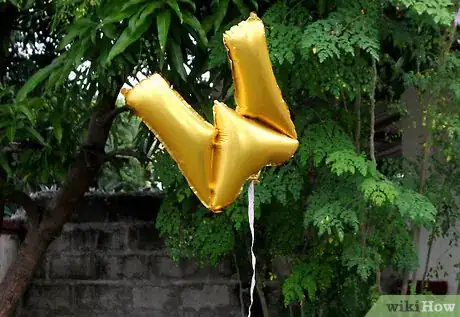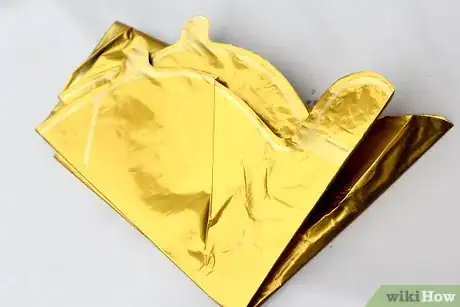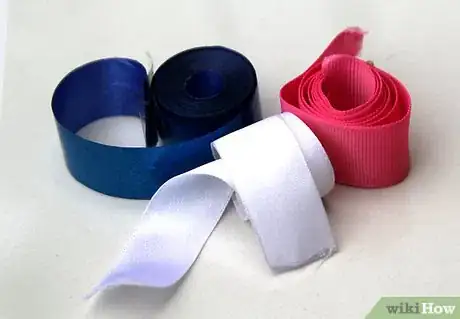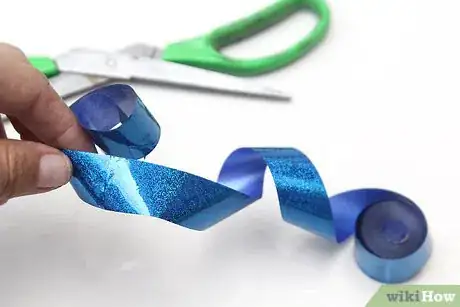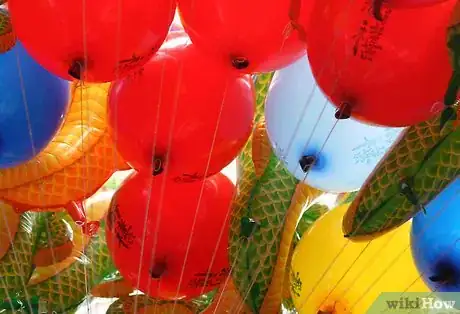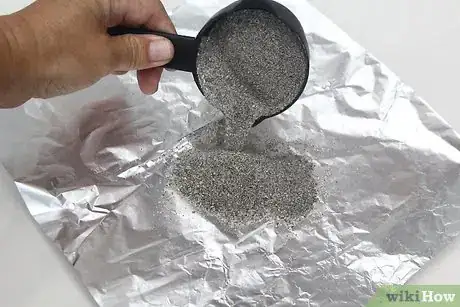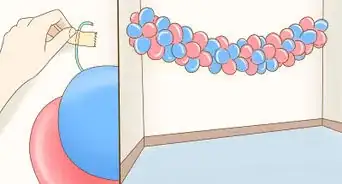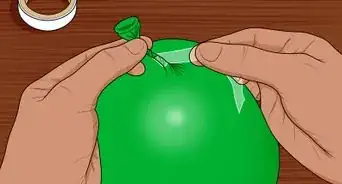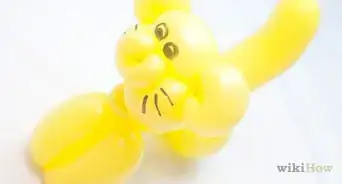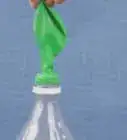This article was co-authored by wikiHow Staff. Our trained team of editors and researchers validate articles for accuracy and comprehensiveness. wikiHow's Content Management Team carefully monitors the work from our editorial staff to ensure that each article is backed by trusted research and meets our high quality standards.
There are 14 references cited in this article, which can be found at the bottom of the page.
This article has been viewed 116,631 times.
Learn more...
Helium balloons are nice decorations for special occasions like birthdays and other parties, since they float ceremoniously instead of falling to the ground. Filling balloons yourself gives you a few advantages. It’s easier to transport uninflated balloons to a party location. You can bring the tank and unfilled balloons to fill up onsite before your party, thereby also ensuring that they last long enough! Also, it’s typically cheaper for you to inflate them yourself.
Steps
Using a Helium Tank
-
1Determine how much helium you’ll need. Multiply the amount of cubic feet of helium required for your balloon size by the amount of balloons you want to fill. Since there are various balloon sizes and helium tank sizes, you may want to consult an online chart to figure out the tank size you want.
- For example, a standard-sized balloon, eleven inches in size, requires .50 cu. ft. of helium. A 50 cu. ft. helium tank can therefore fill 100 eleven-inch balloons, because .50 (amount of cu. ft. required per balloon) x 100 (amount of balloons desired) = 50 (size of tank in cu. ft.).
-
2Obtain a helium tank. You can buy these or rent them from party supply stores. If you will be blowing up lots of helium balloons often, consider buying one. But if this is a one-time thing, rent one instead. Party stores typically offer helium tanks you can rent for up to three days. You may be able to negotiate a longer time frame, or you could simply go to one of the stores which offer longer-term rentals.[1]
- Purchasing a tank with between eight and fourteen cubic feet of helium in it costs around $40 to $60. Renting a helium tank ranges from about $25 for 14 cubic feet of helium up to a little over $200 for 291 cubic feet of helium (enough to fill about 525 eleven-inch balloons).
- Return the item to the store by the time agreed upon when you rented it, so that you don’t get charged an extra fee. A safety deposit may be required and late returns may result in a dock from your deposit.
Advertisement -
3Decide when to fill the balloons. How long your balloons stay afloat can vary based on temperature, humidity and altitude. In general, foil or “Mylar” balloons stay suspended in the air between two and fourteen days, whereas latex versions stay afloat for four to sixteen hours.
-
4
-
5Use the correct adaptor. For latex balloons, attach the larger, cone-shaped adapter. For foil balloons, attach the smaller, screw-shaped adapter at the tip of the latex adapter. Make sure the appropriate adapter is connected to the inflator.[4]
-
6Open the release. The tank should have a release knob that looks similar to the faucet handle for a garden hose. Turn the knob counter-clockwise.[5]
Inflating a Latex Balloon
-
1Attach the balloon to the nozzle and release the helium. Roll the mouth of the balloon a bit down on the nozzle. While holding the end of the balloon onto the nozzle with one hand, use your other hand to press down on the nozzle to release the helium. The balloon will inflate quickly, so be ready to remove it.[6]
- If nothing happens when you press down on the nozzle, try activating the helium by pressing upward on the nozzle instead.
- Don’t overfill the balloon. Latex balloons should have a round shape when inflated. Balloons shaped like pears or light bulbs are overinflated and more likely to burst. They also use up more helium, so that you will get less filled balloons.
-
2Remove the balloon. Gradually let up on the nozzle as the balloon starts to get full. Pinch the end of the balloon and slowly take it off of the valve. Tie a tight knot in the neck of the balloon.[7]
-
3Attach ribbon, if desired. Take a piece of ribbon and place it around the neck of the balloon, above the knot. If you want to curl the shorter end of the ribbon, leave some ribbon hanging on that end. The other end should remain long. Tie a knot in the ribbon.[8]
- Tying the ribbon at the neck of the balloon, instead of below the knot, will give the helium extra security from leakage so that your balloon remains afloat longer.
Blowing up a Foil Balloon
-
1Fill the balloon through its valve. Locate the opening on the tab located at the “tail” end of the balloon. Slip the valve over the nozzle adapter until it fits tightly on. Firmly hold the balloon around the adapter and press the nozzle.[9]
- The balloon is finished inflating when most of the wrinkles have disappeared. Foil balloons don’t expand, so there will be some wrinkles. They will pop if you overinflate them.
-
2Secure the flap. Foil balloons seal automatically, so all you have to do is pinch the valve flat. Don’t tie a ribbon around the valve or neck of the balloon. This can result in air leakage.[10]
-
3Add a long ribbon. Make sure to put it through the tab or hole below the balloon’s valve. Make the ribbon long on one side and short on the other as you tie the knot. Afterwards, you can curl the ribbon and add a sandbag.[11]
-
4Reuse the balloons if desired. Push a long straw through the opening of the balloon. Press down carefully until all of the air has left the balloon. Fold the balloon without creasing it, and store it.
Arranging the Balloons
-
1Choose a ribbon color and style. A good length for balloon ribbons is 48 to 57 inches (120 to 140 cm) per balloon.[12] You can match the ribbon color to the balloon color, or opt for a neutral like ivory or white. Formal occasions like weddings and anniversaries generally use the latter.
-
2Curl ribbon with scissors, if desired. Pinch the scissor blade against the dull side of the ribbon with one hand. With the other hand, pull the length of the ribbon tautly across the scissor blade in one long stroke. Repeat if the ribbon doesn’t curl on the first attempt.
-
3Set up the balloons individually or in bunches. Placing balloons in very large or small bunches may reduce their impact. Consider arranging balloons in bunches the size of five to eight balloons apiece.
- You may want to mix balloon colors, or even use bunches that contain both foil and helium balloons.
-
4Buy or make balloon weights. Buy balloon weights at party stores or discount store retailers. To make balloon weights, pour sand onto a sheet of mylar paper and secure it with curled ribbon.[13]
- For making your own balloon weights, cut sheets of metallic paper down to twelve inches by twelve inches. One cupful of sand should support up to six balloons.
- If you’re purchasing balloon weights at a party supply store, an employee should be able to tell you how many balloons their weights can hold. Alternately, consult a helium height and weight chart for balloons.[14]
Community Q&A
-
QuestionCan I use materials from home to create a floating balloon?
 Community AnswerYes! You can put baking soda in the balloon, and vinegar in an empty water bottle. Put the mouth of the balloon over the top of the water bottle and turn the water bottle upside-down. Shake it up a little bit and then turn the water bottle right side up again. You should see the balloon inflating. Once the balloon is as big as you'd like it to be, pull it off of the water bottle and tie it in a knot.
Community AnswerYes! You can put baking soda in the balloon, and vinegar in an empty water bottle. Put the mouth of the balloon over the top of the water bottle and turn the water bottle upside-down. Shake it up a little bit and then turn the water bottle right side up again. You should see the balloon inflating. Once the balloon is as big as you'd like it to be, pull it off of the water bottle and tie it in a knot.
Warnings
- When you’re finished filling balloons, turn off the valve on the tank and release the extra air in the nozzle. Don’t transport the helium container with the adapter on.[18]⧼thumbs_response⧽
- Balloons can burst in extreme heat.[19]⧼thumbs_response⧽
- Do not inhale helium. It can pose a potentially serious and even fatal risk to your health.[20]⧼thumbs_response⧽
- Don’t release helium-filled balloons into the air. They can be a danger to animals, short-circuit power lines, and pose environmental problems.[21]⧼thumbs_response⧽
References
- ↑ http://www.highaltitudescience.com/pages/helium
- ↑ https://www.youtube.com/watch?v=TffJ5aWg6Xg&feature=youtu.be&t=19
- ↑ https://www.youtube.com/watch?v=tAuE9B9D5gI&feature=youtu.be&t=12
- ↑ https://www.youtube.com/watch?v=TffJ5aWg6Xg&feature=youtu.be&t=33
- ↑ https://www.youtube.com/watch?v=TffJ5aWg6Xg&feature=youtu.be&t=53
- ↑ https://www.youtube.com/watch?v=tAuE9B9D5gI&feature=youtu.be&t=32
- ↑ http://www.balloontime.com/how-to/filling-and-float-time/
- ↑ https://www.youtube.com/watch?v=YvdC_7yTg64&feature=youtu.be&t=7
- ↑ https://www.birthdayinabox.com/pages/how-to-inflate-a-helium-balloon
- ↑ https://www.birthdayinabox.com/pages/how-to-inflate-a-helium-balloon
- ↑ https://www.birthdayinabox.com/pages/how-to-inflate-a-helium-balloon
- ↑ http://www.balloontime.com/how-to/filling-and-float-time/
- ↑ https://www.youtube.com/watch?v=f0zVlNBTxOE&feature=youtu.be&t=29
- ↑ http://www.balloons.com/HeliumWeightChart.pdf
- ↑ https://www.birthdayinabox.com/pages/how-to-inflate-a-helium-balloon
- ↑ https://www.safeelectricity.org/index.php/information-center/library-of-articles/176-mylar-balloon-safety/461-dont-let-mylar-balloons-ruin-the-party
- ↑ https://www.safeelectricity.org/index.php/information-center/library-of-articles/176-mylar-balloon-safety/461-dont-let-mylar-balloons-ruin-the-party
- ↑ https://www.youtube.com/watch?v=TffJ5aWg6Xg&feature=youtu.be&t=136
- ↑ https://www.birthdayinabox.com/pages/how-to-inflate-a-helium-balloon
- ↑ http://www.medscape.com/viewarticle/760299
- ↑ https://www.safeelectricity.org/index.php/information-center/library-of-articles/176-mylar-balloon-safety/461-dont-let-mylar-balloons-ruin-the-party
About This Article
To inflate a foil balloon with helium, start by setting up the tank so the balloon valve is over the nozzle, with the screw-shaped foil adapter attached to the valve. Then, open the tank’s release knob to start the flow of helium. Next, slip the opening of your balloon over the tank’s adapter so it fits tightly. When you’ve got a good seal, hold the balloon and press the nozzle to fill it with helium. As soon as most of the wrinkles on the balloon’s surface disappear, release the nozzle, remove the balloon, and pinch the opening flat to seal it. To learn how to inflate a latex balloon with helium, keep reading!

